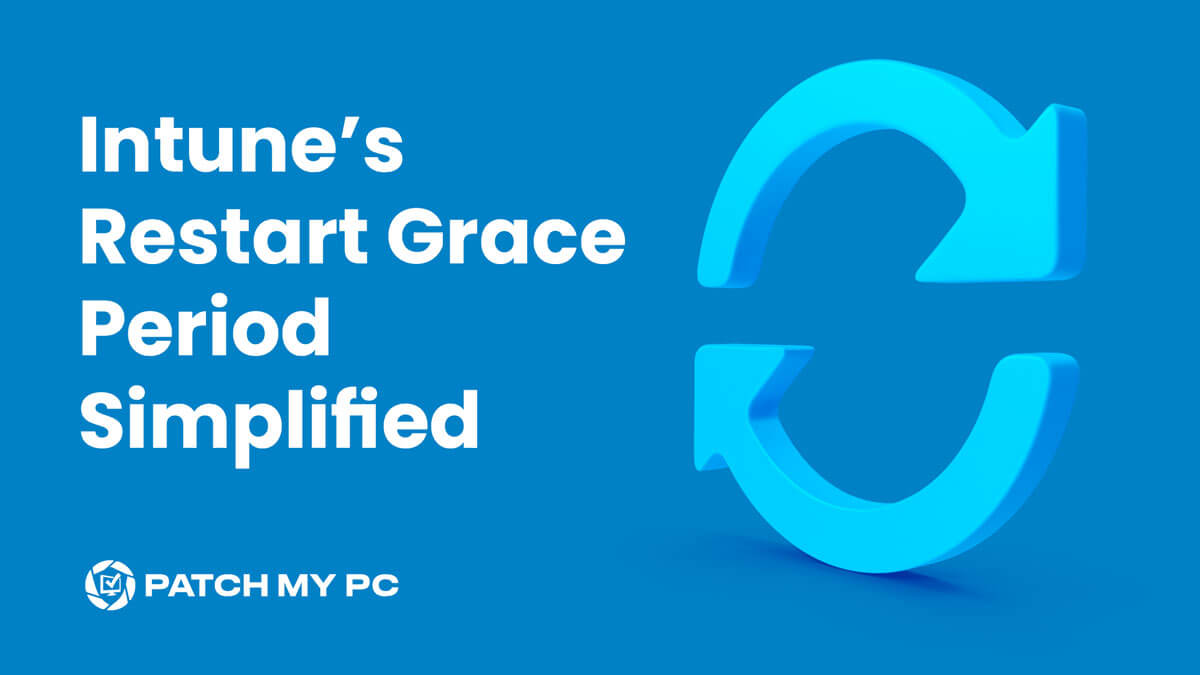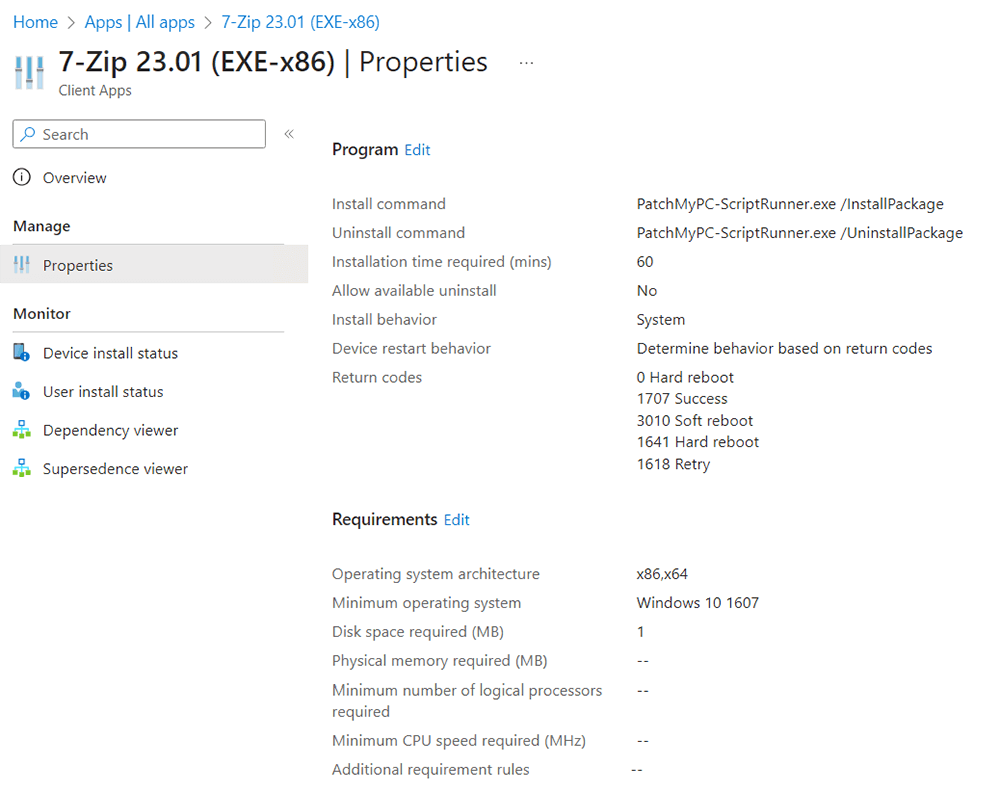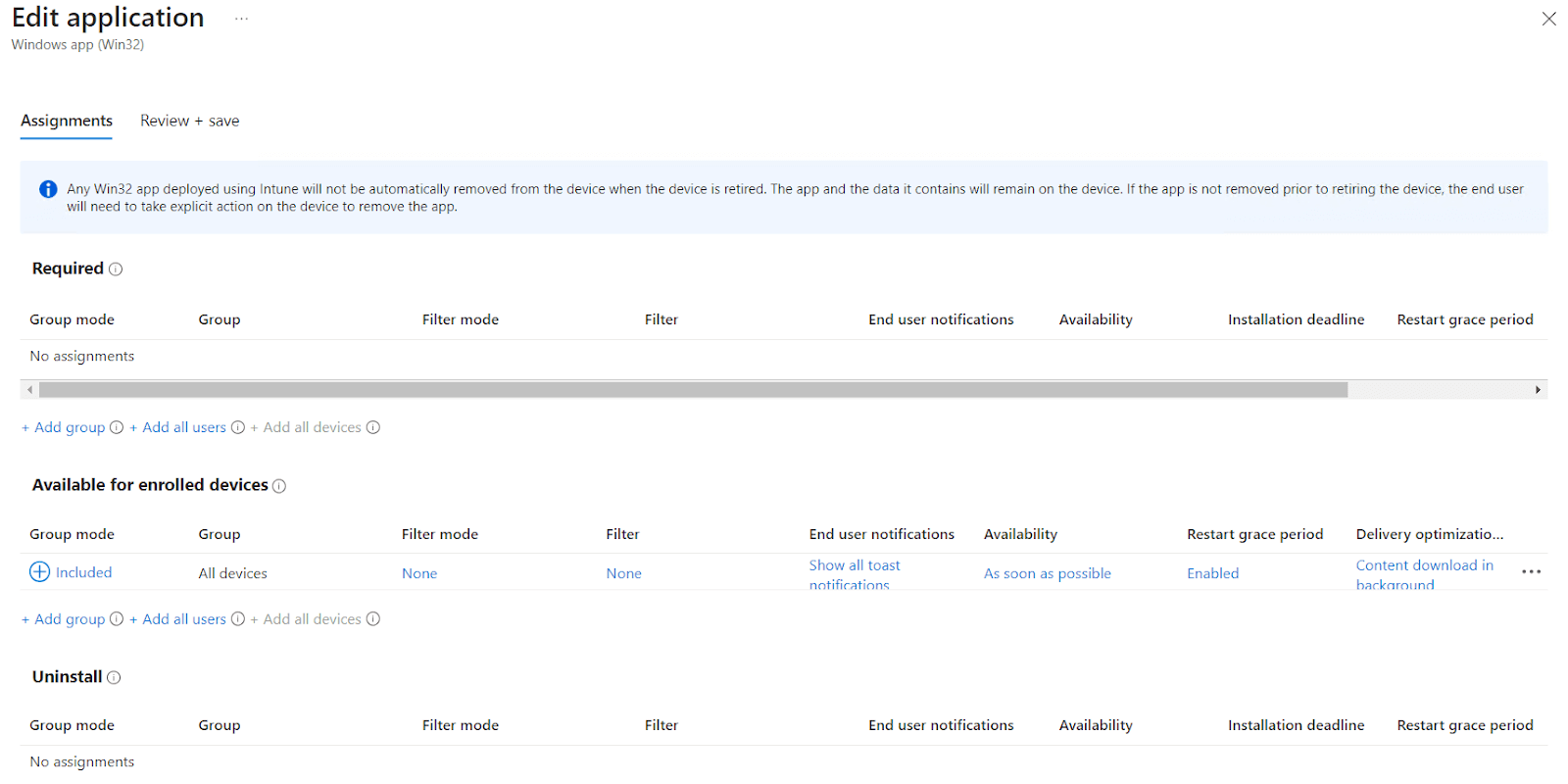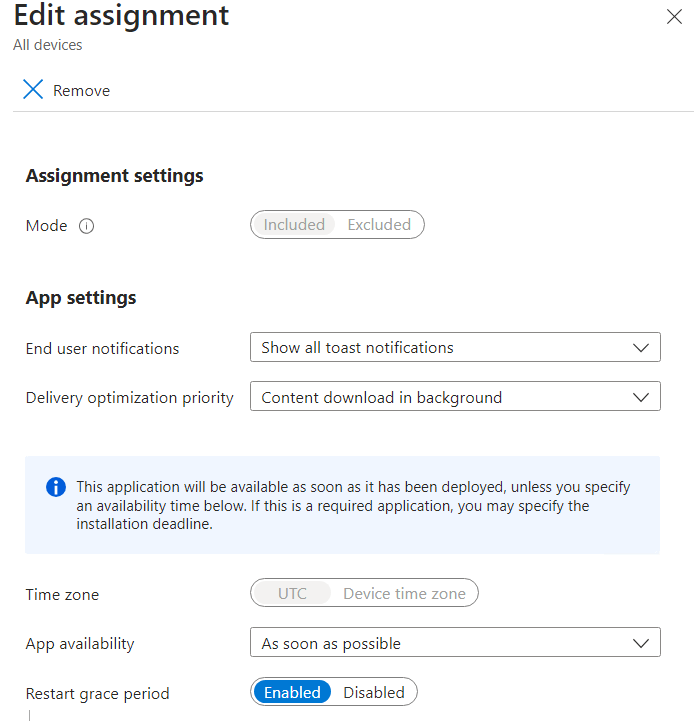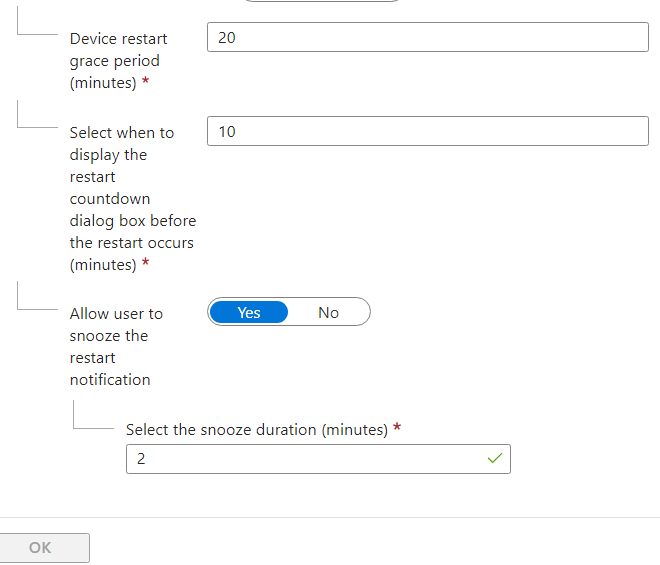Introduction
Have you ever experienced the frustration of your computer demanding an immediate restart right in the middle of an important task? We’ve all been there.
In this blog, we will be diving into something that’s a real game-changer when it comes to device management. The Intune Restart Grace Period will help your devices run smoothly and make sure the updates are installed successfully when deployed through Intune.
No more jargon or complicated stuff – we’re breaking it down so you can understand, configure, and make the most of this nifty feature. Let’s roll!
Intune Restart Grace Period
Think of the Device Restart Grace Period in Microsoft Intune like hitting the snooze button on your alarm clock. Let’s assume that you are using your computer and that it is time to update some critical software. Normally, the default device restart behavior would require you to restart the computer immediately to complete the update process, but sometimes that is not convenient. Maybe you’re in the middle of some important work and a sudden restart would interrupt everything.
In this situation, the Restart Grace period comes to the rescue. It’s like telling your computer “Hey, I’m in the middle of something, can we please delay the restart for a bit”. From Intune, you can specify a time interval during which your computer can continue running without interruption after the update is installed.
For example, you can schedule a 1-hour grace period. This means that your computer will keep running smoothly for that hour, allowing you to finish your work. But when that hour is up, your computer will politely remind you to restart so that it can apply the updates and keep your system secure and up to date.
Making the Restart Grace Period a thoughtful feature designed to make your life easier. This clever feature allows your device to hit the snooze button on that mandatory restart for a set period of time after those updates have been installed.
Configure the Restart Grace Period
Let’s configure the restart grace period for an app in your Intune tenant:
- Log in to the Microsoft Intune Portal and sign in with your admin credentials.
- Head to an app under Apps > All Apps > Select the app for which you want to set the restart grace period.
Scenario: For this blog post I’ve tested this feature with 7-zip: it is deployed it as “available” with a grace period value of “20 minutes,” the restart countdown set to “10 minutes,” and the snooze value for the restart notification set to “2 minutes.” I’ve tested this for “Hard reboot”. - Manually alter the default return exit codes under the program section of the app package to ensure that a successful install value of “0” ensures a hard reboot.
- You can change the exit return code based on how you want to use and display it.
- Assign the app as “Available” with the Restart Grace period setting “enabled”.
- Enable the Restart Grace period and set the values.
- You can customize the following options:
- Device restart grace period (minutes): The default value is 1,440 minutes (24 hours). This value can be a maximum of 2 weeks.
- Select when to display the restart countdown dialog box before the restart occurs (minutes): The default value is 15 minutes.
- Allow user to snooze the restart notification: You can choose Yes or No.
- Select the snooze duration (minutes): The default value is 240 minutes (4 hours). The snooze value can’t be more than the reboot grace period.
- You can customize the following options:
- For the restart behavior, select when to display the restart countdown dialog box before the restart occurs.
- Click on “ Ok” and then review and save.
Client-Side Behavior
Let’s review the behavior on the client side and see how the restart grace period gets triggered. The Intune management extension is responsible for performing all the actions on the client machines. The IME agent is responsible for receiving policy assignments and executing them on the client machine.
When the user tries to install the application, and after it is successfully installed, you will get something like this initially. This is a generic toast notification the user will get from Intune.
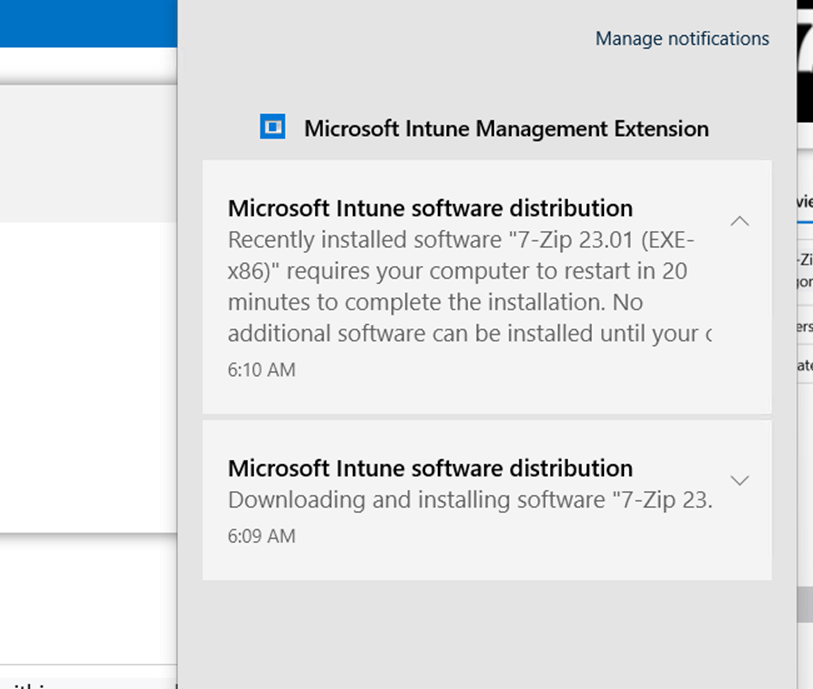
After a minute, the user will get a notification like this in the bottom-right corner:
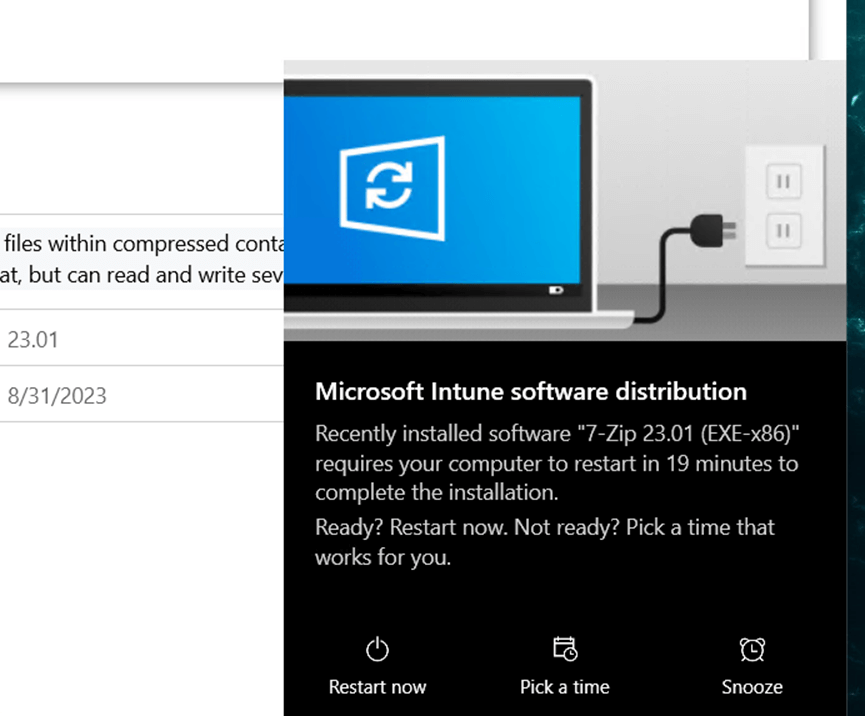
When you head back to the Intune Portal, you will see this:

On the client machine: as soon as the user clicks on snooze, after every 2 minutes, they will get a prompt notification on the screen where they can snooze the notification until the restart countdown is reached.
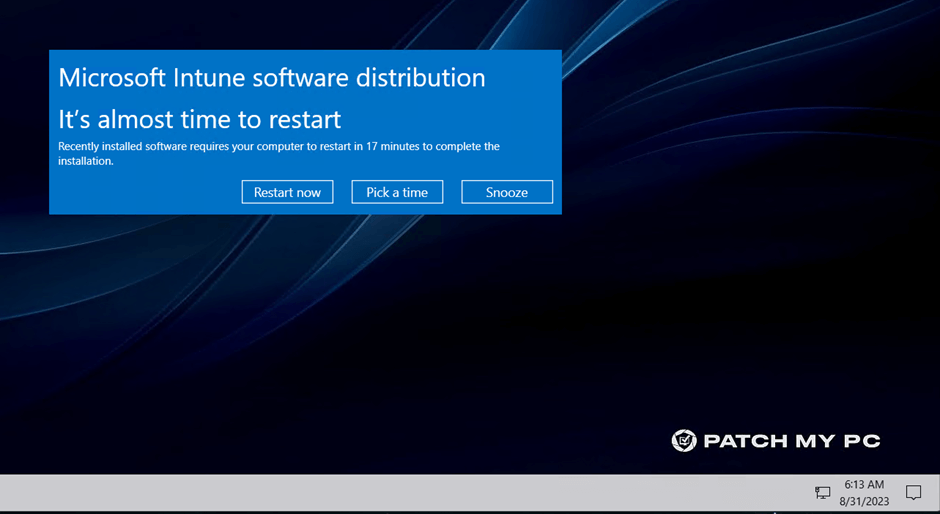
Example: If a user triggers an install at 6:10 AM, after a minute, he will get the notification in the bottom right corner. The user clicks on snooze, and now, after every 2 minutes, he will get a message in the middle of the screen, and he can take action and snooze.
Suppose the user clicks on snooze again after 2 minutes. In that case, they will get another notification until the restart countdown time is reached, which by default in our case will be 6:20. After 6:20 AM, the user will get a notification with no snooze option.
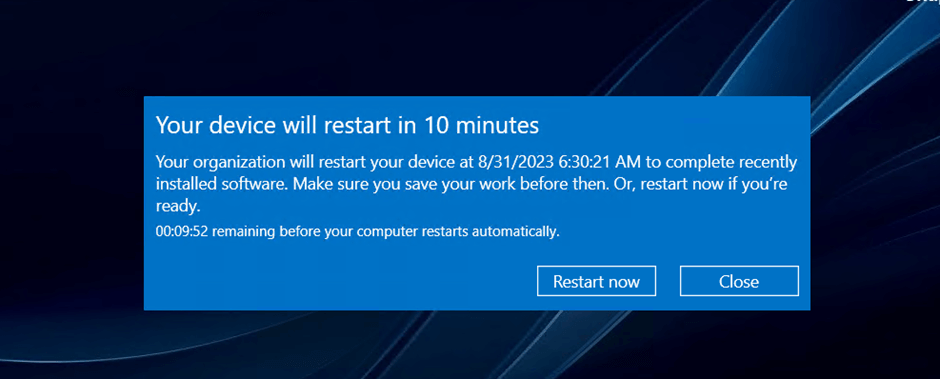
And now, after the grace period is completed, the device will forcefully restart to finalize your update/app installation.
Return Codes
Return codes are usually associated with actions executed on devices through Intune. These return codes are used to indicate the success or failure of a particular operation. Based on return codes, their meanings can vary depending on the context and action being performed.
In the above example, I’ve altered the default return codes to ensure that a successful install value of “0” ensures a hard reboot.

Hard Reboot and Soft Reboot
- Hard reboot: This means a forceful restart will occur, after which the machine will be turned back on. Intune will force a mandatory device restart. It will not let the user postpone or delay beyond a certain point, in this case, after the restart grace period is reached.
- Soft Reboot: This is more user-centric. In this case, the device will prompt the user to restart after updates have been installed. You will get a generic notification in the bottom-right corner of the screen, under the “ Notification” blade.
Advantages of Using the Restart Grace Period
- Fewer Annoying Interruptions: It’s awesome because it lets your computer wait a bit before restarting itself after getting updates. When you’re super busy with important stuff or chatting with friends online your computer won’t suddenly interrupt you.
- You’re in Charge: Think of it like this: instead of your computer deciding to restart on its own right when you’re busy, this feature lets you choose when it should restart. So, you’re the boss, not your computer!
- Admins Rejoice: For the tech wizards juggling many devices, this is like a vacation. Updates happen, but the chaos takes a backseat.
- Offers Customization: Intune provides flexibility in defining the length (in minutes) of the restart grace period, allowing organizations to tailor it to their own requirements. As a result of this customization, the functionality may be tailored to different user groups or use cases.
- Reporting and Monitoring: Intune provides reports to administrators to track the progress of restarts across their company. You may also find these under the “Device Install Status” section.
The Catch: What to Watch Out For
- Balance Act: Picking the right time before your device restarts is like finding the sweet spot between staying updated and not interrupting your device’s flow.
- Delayed Time: Giving your device more time before it restarts might mean some updates chill out for a bit. Not forever, though. It will trigger the device to forcefully reboot after the grace period is over.
- Security Risks: Restarts that are delayed for a long time may expose devices to security flaws that can be mitigated with timely updates.
- User Ignorance: Some users may not fully understand the importance of applying updates. They might postpone restarts for an extended period of time, unknowingly putting their device at risk.
Conclusion
The user can snooze until the restart countdown is reached. Intune’s Restart Grace Period is like a trusty sidekick that helps you stay updated without causing chaos in your environment. Just remember: while it’s awesome, finding that sweet spot for your device’s grace period is the name of the game.
Reference Articles
Win32 app management in Microsoft Intune | Microsoft Learn
Working with the restart behavior of Win32 apps – All about Microsoft Intune (petervanderwoude.nl)
Enable Device Restart Grace Period For Intune Win32 App HTMD Blog (anoopcnair.com)
